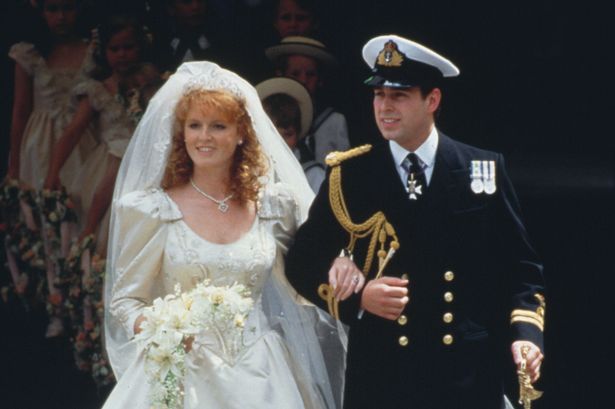The seemingly unconventional relationship between Prince Andrew, the Duke of York, and Sarah, the Duchess of York, has captivated public interest for decades. Their ten-year marriage, which began in a whirlwind romance and culminated in a lavish Westminster Abbey wedding in 1986, ultimately succumbed to the pressures of royal life and Andrew’s naval career, ending in a highly publicized separation in 1992 and finalizing in divorce in 1996. Despite the dissolution of their marriage, their story didn’t end there. In a surprising turn, they forged a unique post-marital bond, characterized by mutual respect, shared parenting, and a remarkably close friendship. This unorthodox arrangement has seen them cohabitating at Royal Lodge, raising their two daughters, Princess Beatrice and Princess Eugenie, and navigating the complexities of royal life together, albeit separately. Their continued closeness, despite the initial scandal and public scrutiny surrounding their divorce, has prompted much speculation and debate about the true nature of their relationship and the underlying factors that have sustained it.
The enduring connection between Andrew and Sarah can be attributed to several key factors. Foremost is their shared commitment to their daughters. From the outset, both Andrew and Sarah prioritized creating a stable and loving environment for Beatrice and Eugenie, despite the challenges posed by their own separation. This shared parental responsibility fostered a sense of unity and cooperation, which naturally extended beyond the realm of childcare. Their shared experiences as parents, the joys and struggles of raising their daughters together, created a strong foundation for their ongoing relationship. Furthermore, both Andrew and Sarah experienced the isolating nature of royal life, a shared experience that likely forged a deeper understanding and empathy between them. The pressures of public scrutiny, protocol, and the demands of royal duties created a unique bond, particularly during the tumultuous period surrounding their separation and divorce. This shared understanding of the challenges of royal life became a cornerstone of their enduring connection.
Another contributing factor to their unusual post-marital dynamic is the apparent lack of animosity between them. While the reasons for their divorce were widely speculated upon, there appears to be a genuine absence of bitterness or resentment. This lack of acrimony facilitated their ability to communicate and cooperate effectively, particularly in matters concerning their daughters. Their ability to maintain a cordial and respectful relationship, free from public displays of animosity, has been a hallmark of their post-divorce dynamic. This absence of negativity has likely played a crucial role in enabling them to cohabitate and remain close friends. Their mutual respect, even after the breakdown of their romantic relationship, suggests a deeper understanding and acceptance of each other’s strengths and weaknesses.
Further cementing their bond is a deep-rooted affection and loyalty that transcends the romantic aspects of their former relationship. Over the years, they have consistently demonstrated unwavering support for each other, both publicly and privately. This loyalty has been particularly evident during periods of personal and professional challenges, such as Andrew’s withdrawal from public duties following controversies surrounding his association with Jeffrey Epstein. Sarah has steadfastly defended Andrew during these difficult times, showcasing a level of loyalty that speaks volumes about the depth of their connection. Their enduring friendship, built on shared experiences, mutual respect, and unwavering loyalty, has proven to be a resilient force, weathering numerous storms and defying conventional expectations.
The decision to cohabitate at Royal Lodge further underscores the unique nature of their relationship. While unconventional, this arrangement appears to be mutually beneficial, providing both Andrew and Sarah with emotional support and practical convenience. Sharing a residence allows them to remain actively involved in each other’s lives and to share the responsibilities of maintaining a household. This practical aspect of their cohabitation likely contributes to the stability and longevity of their relationship. Furthermore, living together allows them to be present for their daughters and grandchildren, fostering a close-knit family dynamic. The benefits of shared childcare and family support undoubtedly contribute to the overall harmony of their unique living arrangement.
Ultimately, the relationship between Prince Andrew and Sarah Ferguson defies easy categorization. It is a complex and nuanced dynamic built on shared history, mutual respect, unwavering loyalty, and a deep commitment to their family. While their unconventional post-marital arrangement has raised eyebrows and fueled speculation, it also serves as a testament to the possibility of forging meaningful and enduring connections even after the dissolution of a romantic relationship. Their ongoing story, characterized by its complexities and unconventional nature, continues to fascinate and intrigue, challenging traditional notions of post-divorce relationships and demonstrating the enduring power of friendship and family. Their ability to navigate the challenges of royal life, parenthood, and public scrutiny while maintaining a close and supportive relationship is a testament to the strength and resilience of their unique bond.














